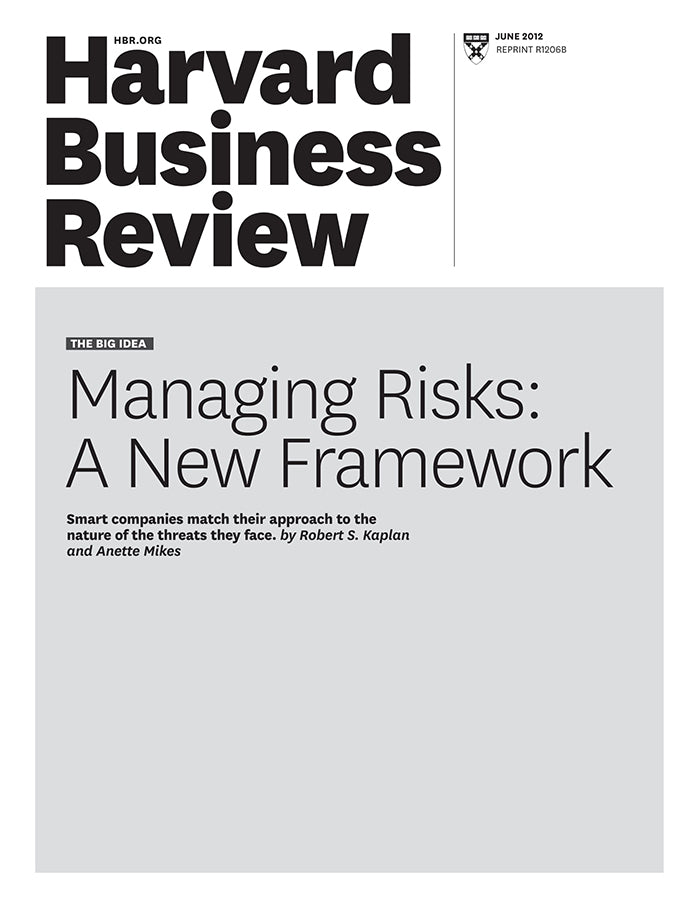Managing Risks: A New Framework
受取状況を読み込めませんでした
Risk management is too often treated as a compliance issue that can be solved by drawing up lots of rules and making sure that all employees follow them. Many such rules, of course, are sensible and do reduce some risks that could severely damage a company. But rules-based risk management will not diminish either the likelihood or the impact of a disaster such as Deepwater Horizon, just as it did not prevent the failure of many financial institutions during the 2007-2008 credit crisis. In this article, Robert S. Kaplan and Anette Mikes present a categorization of risk that allows executives to understand the qualitative distinctions between the types of risks that organizations face. Preventable risks, arising from within the organization, are controllable and ought to be eliminated or avoided. Examples are the risks from employees' and managers' unauthorized, unethical, or inappropriate actions and the risks from breakdowns in routine operational processes. Strategy risks are those a company voluntarily assumes in order to generate superior returns from its strategy. External risks arise from events outside the company and are beyond its influence or control. Sources of these risks include natural and political disasters and major macroeconomic shifts. Risk events from any category can be fatal to a company's strategy and even to its survival. Companies should tailor their risk management processes to these different risk categories. A rules-based approach is effective for managing preventable risks, whereas strategy risks require a fundamentally different approach based on open and explicit risk discussions. To anticipate and mitigate the impact of major external risks, companies can call on tools such as war-gaming and scenario analysis.
【書誌情報】
ページ数:13ページ
サイズ:A4
商品番号:HBSP-R1206B
発行日:2012/6/1
登録日:2016/6/21


